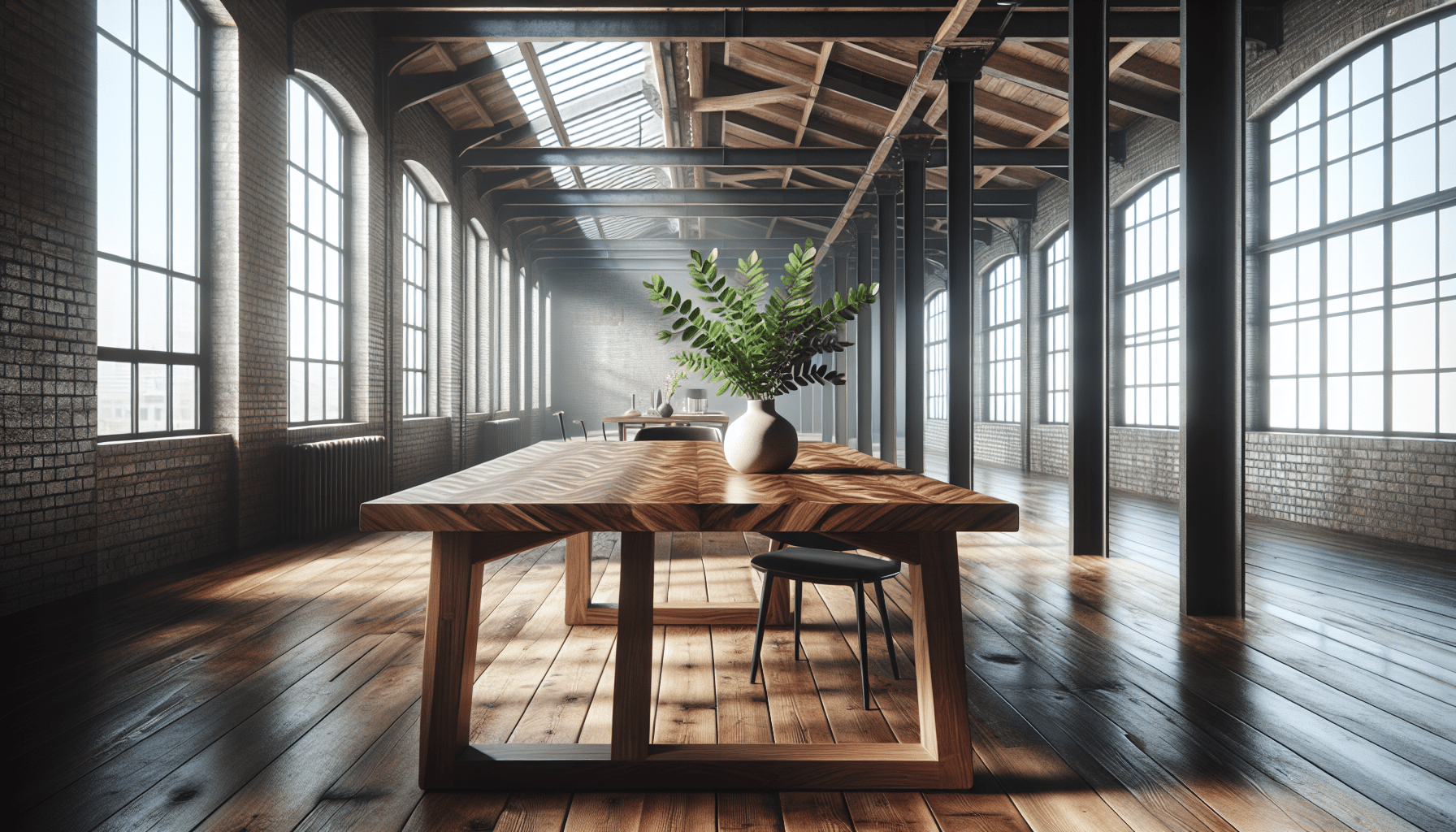Have you ever wondered how two seemingly contrasting design styles could come together in your living space? If you’re intrigued by the idea of blending functionality and aesthetics, you’ve probably heard of Japandi style, which combines Japanese minimalism and Scandinavian coziness. But can this serene and uncluttered approach really thrive within an industrial loft’s raw, edgy environment? Let’s find out how to successfully marry these two distinct styles.
Understanding Japandi Style
Japandi style is rooted in both Japanese and Scandinavian design principles. It emphasizes simplicity, minimalism, and a connection to nature. You might think of soft textures, clean lines, and a color palette that promotes calmness.
Key Characteristics of Japandi
- Minimalism: Japandi emphasizes ‘less is more’. You will want to prioritize functional items and declutter your space.
- Natural Materials: Wood, stone, and organic textiles play a big role here. Think bamboo furnishings or linen curtains.
- Neutral Color Palette: Earthy tones like beige, warm grays, and muted greens create a serene atmosphere. You’ll feel more at ease in spaces that use these colors.
- Functional Design: Each piece should serve a purpose. This could mean furniture that doubles as storage or decor that has a story behind it.
- Cultural Influence: Elements from both Japanese and Scandinavian cultures are prominent, with an emphasis on craftsmanship and sustainability.
By understanding these characteristics, you can begin to envision how Japandi might fit into an industrial setting.
The Industrial Loft Aesthetic
Industrial design is marked by the use of raw materials, open spaces, and an overall unfinished look. If you live in a loft, you might notice the high ceilings, exposed brick walls, and metallic accents that define this style.
Features of Industrial Lofts
- Open Floor Plans: You’ll likely have a vast area that can serve multiple purposes, from living spaces to home offices.
- Raw Materials: Elements like steel beams, unfinished wood, and concrete floors are common. This establishes a sense of rugged charm.
- Repurposed Items: Vintage furniture and DIY decor are often used, contributing to an eclectic vibe.
- Neutral Color Schemes: Gray, black, and white are staples in industrial spaces, creating a blank canvas of sorts.
Understanding this setting will be crucial as we discuss how to merge these styles effectively.
Finding Harmony Between Japandi and Industrial Styles
Combining Japandi with industrial elements may seem challenging, but it can result in intriguing and beautiful spaces. Here are some ways to achieve that balance:
Focus on Minimalism
Both styles value minimalism. In your industrial loft, aim to reduce visual clutter. This might involve selecting fewer, more meaningful pieces of furniture. For example, consider investing in a simple wooden table that embodies that Japanese aesthetic without overshadowing the industrial features.
Incorporate Natural Materials
While industrial spaces often lean toward metal and concrete, introducing wooden elements can soften the harshness. Think about replacing some metal furniture with pieces that include reclaimed wood. This will add warmth and connect with the natural aesthetic of Japandi style.
Utilize a Neutral Palette
You might already be living in a loft that features a lot of gray and black tones. To integrate Japandi style, incorporate soft beiges and earthy tones into your decor. Using textiles, like a light wool throw or linen cushions, will mix well with the harder elements typically found in industrial designs.
Blend Textures
Combining hard and soft materials can create a unique look that pays homage to both styles. Think of pairing a plush Scandinavian sofa with a raw steel coffee table. The contrast can create a visually appealing and comfortable space.
Essential Elements for a Japandi Industrial Loft
What kind of elements should you think about incorporating into your industrial loft to reflect Japandi style? Here are some key components to consider:
Furniture Selection
Choosing the right furniture can set the tone for your entire space. Look for:
| Type of Furniture | Japandi Influence | Industrial Touch |
|---|---|---|
| Sofas | Low-profile, neutral tones | Upholstered in natural fabrics |
| Coffee Tables | Wooden or bamboo | Metal or glass surfaces |
| Chairs | Simple shapes | Vintage or repurposed designs |
| Shelving Units | Clean lines, open design | Metal frames or wall-mounted |
| Lighting Fixtures | Minimalist with warmth | Industrial-style pendants |
When selecting furniture, keep in mind the balance you want to strike. The simplicity of form is key to Japandi style, while the ruggedness of industrial design adds character.
Accessorizing Mindfully
Japanese decor often features a limited number of accessories that each hold significance. In an industrial loft, it’s important to choose decor that contributes to both the function and style of your space.
Thoughtful Accessories to Consider
- Plants: Indoor plants can bring life to your space while complementing both styles. Consider low-maintenance greenery like succulents or a fiddle-leaf fig.
- Art: Look for pieces that reflect your personality without overwhelming. A simple abstract painting can serve as a focal point.
- Textiles: Use soft throws and cushions to create warmth against the colder backdrop of your loft.
Lighting Choices
Light is crucial in any design, but especially in a loft. You might want to think about:
- Natural Light: Keep window treatments minimal to allow maximum light.
- Layered Lighting: Incorporate a blend of ambient, task, and accent lighting to create different atmospheres.
| Lighting Type | Japandi Effect | Industrial Fit |
|---|---|---|
| Ambient Lights | Soft and warm | Metallic finishes |
| Task Lighting | Simple and functional | Edgy designs, exposed bulbs |
| Accent Lighting | Minimalist fixtures | Vintage style lamps |
Practical Tips for Designing Your Space
Now that we’ve explored various elements, let’s break down how to effectively design your Japandi industrial loft.
Establish a Focal Point
Identify one main feature that can serve as the focal point of your room. This could be:
- A statement piece of furniture, like a beautifully crafted dining table.
- A vibrant wall color or wallpaper that draws the eye.
- An artistic piece of decor that encapsulates both styles.
Create Zones
Industrial lofts often lack defined spaces. You can create zones by using rugs or strategically placed furniture to delineate areas for different activities. This will help promote a sense of organization and calm amidst the open layout.
Balance Clutter
While you might be a fan of collections and accessories, ensuring that your space remains free of unnecessary items is key. Choose a few standout decor pieces that reflect your personality and style.
Personalize the Space
Ultimately, your loft should speak to you. Feel free to incorporate personal touches such as family photos, travel souvenirs, or pieces that motivate you. This will help your loft feel lived in and welcoming.
Conclusion: Merging Styles for a Unique Space
Can Japandi work in an industrial loft setting? Absolutely! When you focus on simplicity, natural materials, and a mindful approach to design, you can create a harmonious atmosphere that incorporates the best of both worlds.
As you embark on this design journey, consider each piece for its function and how it contributes to the overall feel of the space. Over time, you’ll find that the integration of these styles not only enhances your loft but also reflects who you are.

